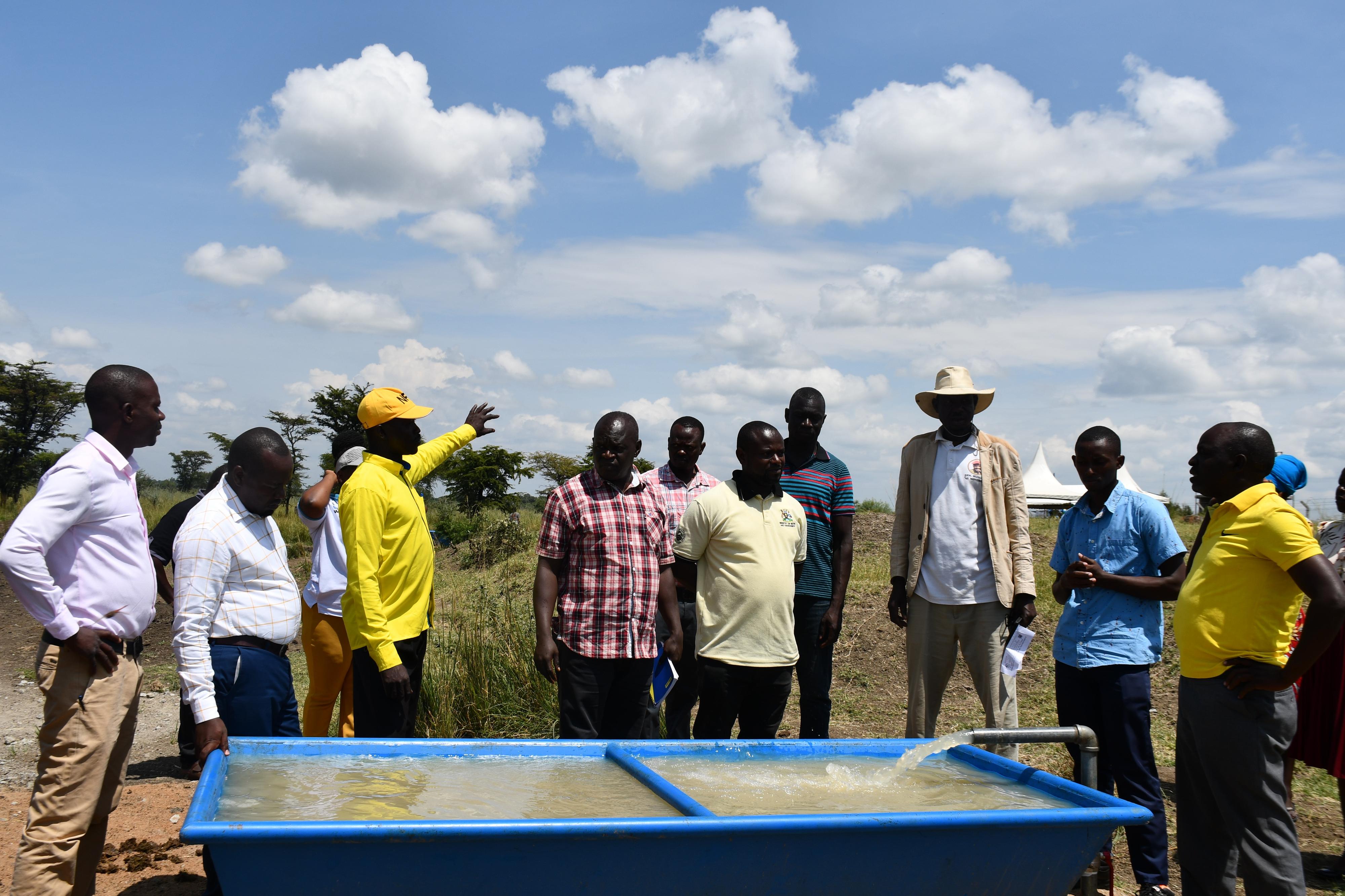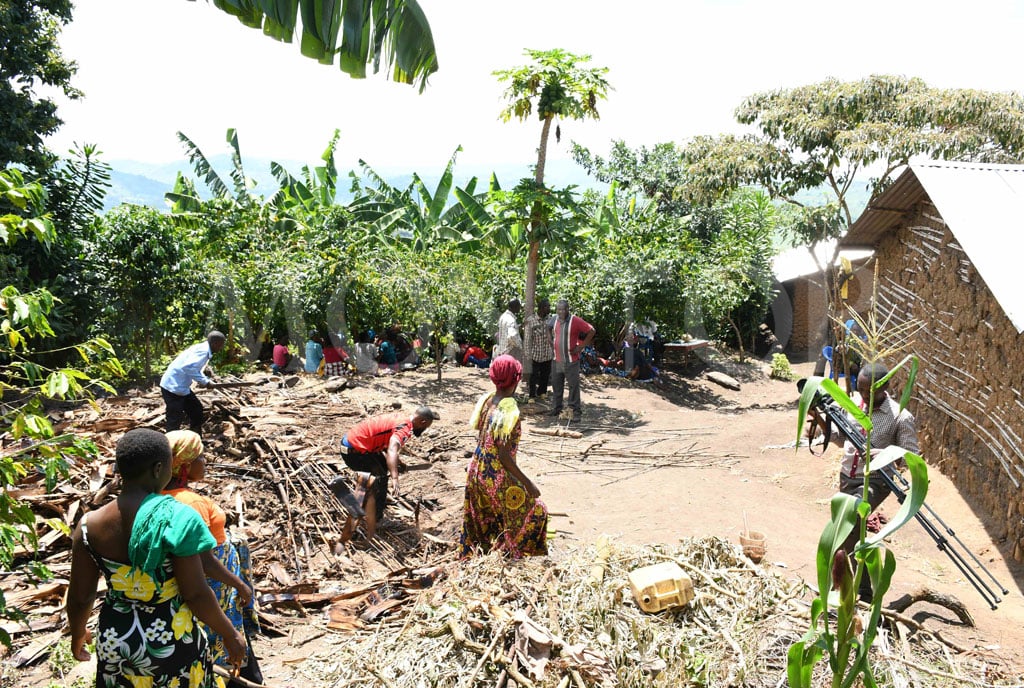Districts unveil plan to stop fights over water

Local leaders and officials from the Ministry of Water and Environment at one of the cattle troughs constructed on Odukul dam in Kapelebyong District. PHOTO | FRED WAMBEDE
What you need to know:
- The chairperson of Kapelebyong District, Mr Francis Akorikin, said the agreement, among other things, gazetted three dams that cattle keepers from Karamoja can share with the people of Kapelebyong and also restricted three others.
Leaders of Kapelebyong District in Teso Sub-region and Napak District in Karamoja Sub-region have signed an agreement on the sharing of dams in a bid to stem cattle theft and tribal conflicts.
The chairperson of Kapelebyong District, Mr Francis Akorikin, said the agreement, among other things, gazetted three dams that cattle keepers from Karamoja can share with the people of Kapelebyong and also restricted three others.
“We agreed on some dams to be used by indigenous people and those to be shared by the people of Karamoja and Kapelebyong, starting this year for the spirit of cohesion and cross border peace building initiatives,” he said.
“This is in order to streamline the management of cattle and also to minimise conflicts and tension among the cattle keepers,” he added.
Mr Akorikin was speaking at the weekend during the commissioning of Odukul flood mitigation valley dam in Kapelebyong Town Council.
The dams to be shared are Okok, Kirik and Asurgwa and those restricted to only cattle keepers from Kapelebyong are Ongunukonye, Areme and the newly constructed Odukul.
The Odukul dam, which has been in operation for two years and stores 30,000 cubic meters of water with drainage channels of a capacity of 50,000 cubic meters, waters about 20,000 cows.
It was constructed by the Ministry of Water and Environment in 2021 after flash floods from Karamoja displaced households in the area and Odukul Primary School in 2020.
Mr Akorikin said the installation of the modern valley tank to water animals and also for crop production has changed the lives of the locals.
“Before this dam, most of the animals used to move towards Karamoja to share the water facility at the border with Napak and as a result, it used to expose our animals to stealing but now that the dam is here, the animals will not be able to mix. This will give us extra security for the animals,” he said.
Mr Moses Igoa, a resident of Odukul Village, said they hope the agreement will promote peaceful co-existence with cattle keepers from Karamoja, especially Napak District.
Irrigation scheme
Mr Pius Opio, the secretary for the users’ committee of Odukul dam, said the government should consider adding a component of an irrigation scheme to the facility to support commercial agriculture.
“We are graduates but we don’t have jobs, so we ask the government through the Ministry of Water to set up an irrigation scheme for us so that we do agriculture as a business,” Mr Opio, who holds a diploma in crop production and management, said.
Mr Joseph Abiar, the LCIII chairperson of Kapelebyong Town Council, said with the construction of the dam, flooding has reduced.
Kapelebyong district suffers from flooding every year during the wet season that starts from July to November, compounded by surface runoff from Karamoja Sub-region.
Eng Patrick Okotel, the regional manager for water for production from the Ministry of Water And Environment, said the residents are already benefitting from the facility.
“The quality of cows has improved and people’s lives but the challenge is how to sustain the facility by the users,” he said, adding that they will design an irrigation system in the next phase.
The RDC of Kapelebyong, Mr Tom Olinga Otukol, urged locals to own the dam and utilise it to improve their livelihoods.




